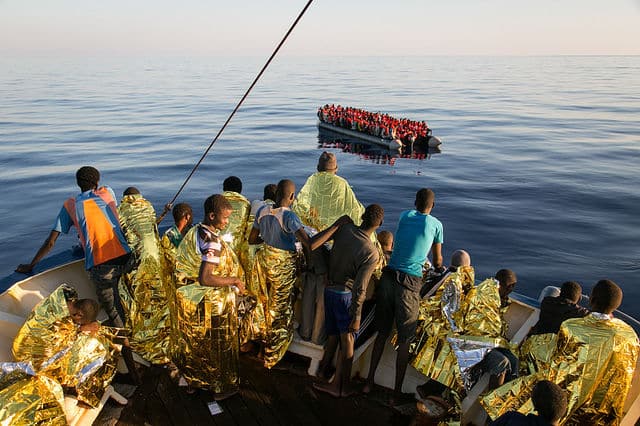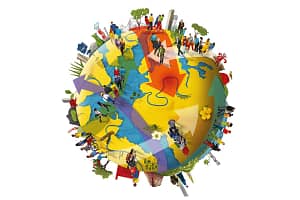Migration 2014 compared to 2013. This article is regularly updated. Figures until February 2014.
These figures are based on the latest provisional figures from Statistics Netherlands, both from 2013 and 2014, and should therefore be interpreted with caution. Nevertheless, some trends have something to say about them. The figures are by country of birth. Because the native Dutch are also born abroad, – – 2,000, you can not simply translate the figures into immigrants (of the 1st generation). You cannot translate the native Netherlands into native Dutch at all: one in three net emigrants is a second-generation immigrant.
The figures compare January, February 2014 to the same period last year.
Strengths:
Immigration increased by 10% to 29,000
Emigration but increased from 500 to 22,500.
-Migratiesaldo with r more than doubled to nearly 6,500
-No tsunami of Romanians and Bulgarians, but increase in immigration
-Increase Poland further.
There is an increase in immigration of about 15%. It should be noted that emigration has barely increased, more than doubling net immigration.
2. Total EU
The EU (excluding Croatia). A marked increase over last year in immigration, but remarkably not in emigration. There may be an increase in family migration (EU nationals who immigrated before and who now bring their partner/children here. There may also be an increase in employment in sectors in which Eastern Europeans in particular work. Good weather may also have played a role in this area.
3. EU-14 (EU)
An increase in the number of “old EU” immigrants and a slight increase in emigration mean higher net migration.
4. Eastern Europe EU-10
The new EU countries in Eastern Europe (excluding Croatia, Romania and Bulgaria) show a significant increase in immigration, but virtually no emigration, which makes a considerably higher balance.
5. Bulgarians and Romanians
The increase in immigration and a slight decrease in emigration result in a higher net migration of 600 men in the first 2 months of this year.
February gave a little less immigration than January.
In any event, it is much less than many had anticipated last year.
6. Turks and Moroccans
It never ceases to amaze me with Turkish and Moroccan figures. The high number of emigrants compared to immigrants has been the case for many years. Traditionally, the immigration of Turks and Moroccans is a family migration and you see much less return migration than, for example, students. The majority of immigrants and emigrants are Turkish. You see many more students and knowledge workers in this group than in Moroccans. The balance with the Turks is almost zero.
These immigrants also have quite a few Dutch nationals who are returning to our country. They once immigrated with Turkish or Moroccan nationality, then emigrated with Dutch nationality and immigrate again with Dutch nationality.
7. Poland
The increase in migration to the EU-10 compared to Figure 4 is almost entirely due to Poland. We now know that a significant number of Poles – and other EU nationals – are in our country but are not registered in the municipal personal records database (population register). Usually, these are people who are only here for a few months, but there will also be people who will not register at all. Maybe there’s some catching up. On the other hand, improving the economy can play a role and good weather. There may also be more family reunification and training.





More Stories
How Old Are the Migrants? Also the Latest Migration Figures.
Once Again the Prankster of Mass Immigration
Why Do Foreigners Immigrate?